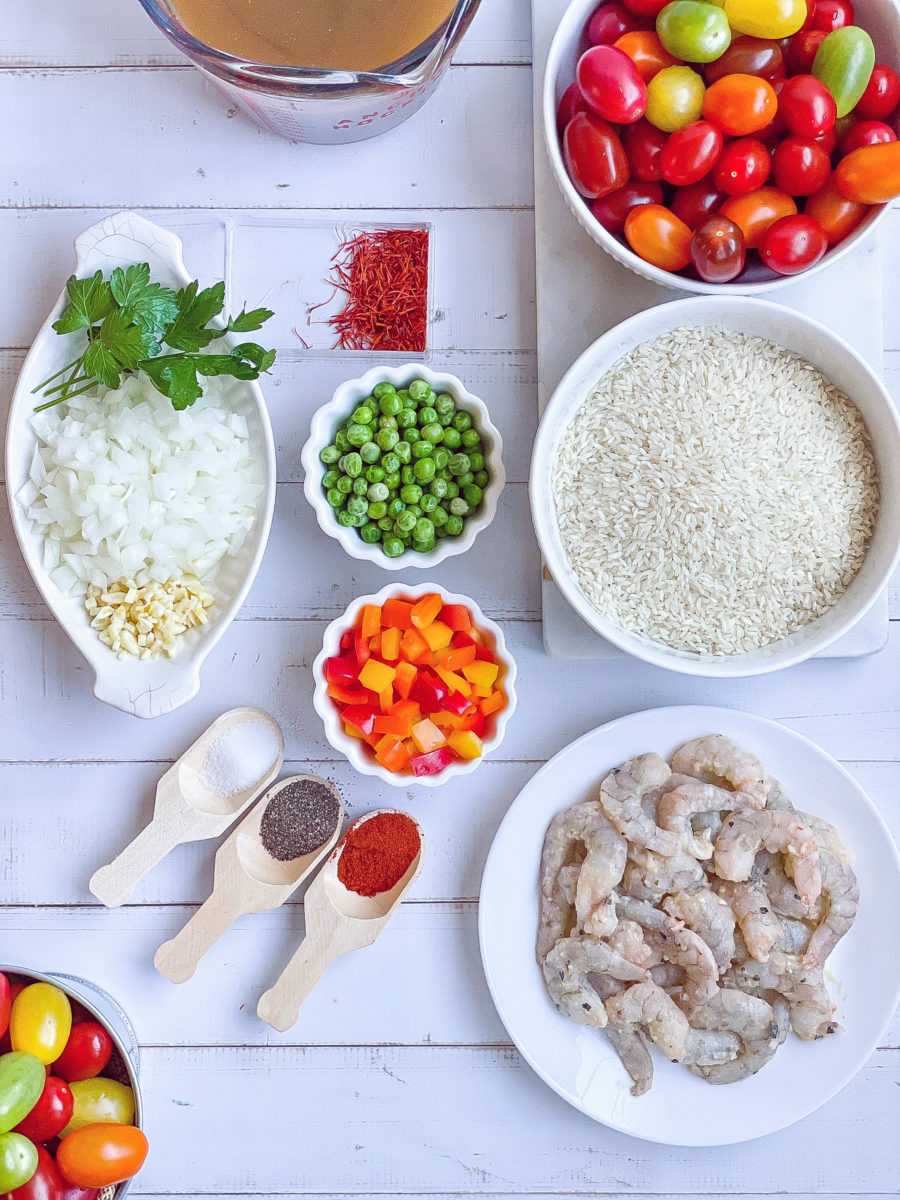Have you ever been obsessed with a food you’ve never even tried? Our friend Tanya from @tanyas.bowlsandbrushes was very curious about paella and despite never tasting the authentic dish, it inspired her to work on her own recipe! She created this colorful Sangria Medley Paella that is beautiful to look at and has tons of flavor.

Paella seems to be one of those dishes that can either go really great or horribly wrong with one misstep. There are many who think that the key to a great paella is the seafood, but we are going to let you in on a little secret: the rice you use is the key to getting the recipe perfect every time.
It is important that you use short grain rice. Medium grain will do, if that’s all you can find, but long grain rice is out of the question. If you can find it, Bomba rice is the perfect rice for this recipe. It is grown for the sole purpose of making paella. The unique quality of this rice is that it has the ability to absorb a lot of liquid without turning into mush – which is something you definitely want to avoid when making paella. If you can’t find Bomba rice (which is sometimes labeled as “Valencia Rice” or “Spanish Rice” – not to be confused with a flavored rice dish of the same name) there are a few alternatives you can use: Calasparra rice, Senia rice, Bahia rice, Arborio rice, or Calrose rice. Be mindful though, that these different varieties of rice can affect the cook time of your paella!
We have a few tips when it comes to making the perfect paella.
Use the right pan.
Most rice dishes are made in pots, but paella is made in a pan. Traditionally it is cooked in a large wide, shallow, two-handled pan that is made of a thin metal. The type of pan you use contributes to the unique texture of paella. You need a pan that allows for quick and even cooking.
Resist the urge to stir the rice!
The best paellas have a crispy layer of rice at the bottom. This is Tanya’s favorite part of the dish, and she admits that it takes patience and practice to perfect. That crispy layer of rice is called socarrat and it will only form if you don’t stir the paella after you have added the rice.

Use quality ingredients.
While there are many different types of paella, there are key ingredients that remain the same:
- Rice. As mentioned above, the type of rice you use is going to affect the paella’s outcome.
- Sofrito. This is an aromatic base consisting of onion, garlic, bell peppers, olive oil and tomatoes. For this recipe, Tanya uses our Sangria® Medley Tomatoes. This unique tomato blend has different colors, textures and flavors of tomatoes and really elevates the look and taste of this dish.
- Broth. Never underestimate the power of a good broth or stock. This can turn a good paella into a great paella!
- Saffron. This is the most important spice to go into a paella recipe. Not only does it give the dish its rich, golden color, but it also adds that smoky flavor that paella is known for.
Don’t cover the pan.
Most rice dishes call for having the pot covered while the rice is cooking, but not paella. The pan should always be uncovered to help the rice retain its dry texture.

How Tanya Makes Her Paella
First, she starts out by washing her shrimp and tossing them in olive oil, garlic, salt and pepper. In a suitable pan for paella, heat up some olive oil and put the shrimp in to cook. Once the shrimp turns pink, remove it from the heat, set it aside and reserve any of the liquids in the pan. Return the pan to the heat, add more olive oil, garlic bell peppers and onion. Sauté until the onion becomes translucent, but not brown! Add in the Sangria® Medley Tomatoes and cook until they start turning soft. You now have a sofrito ready!
It is now time to add the rice. Mix the rice into your sofrito and then let it cook for a few minutes. Pour in your broth, but do not stir! Allow the broth to come to a boil and add in the saffron. Let it cook for 10 at a boil and then turn the heat down so that it simmers for about 15 to 20 minutes. Add the shrimp back in while the paella is simmering. If the rice has not developed a crispy crust around the edges, you can turn the heat up again and cook it for a few minutes longer, being careful not to burn the rice.
To get the full recipe, click here.
For tasty recipes, plus more tips and tricks, make sure to sign up for Pure Flavor®’s monthly newsletter.



